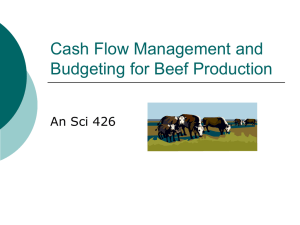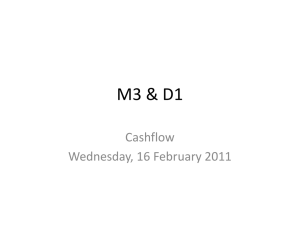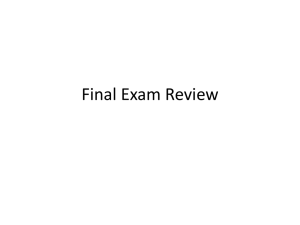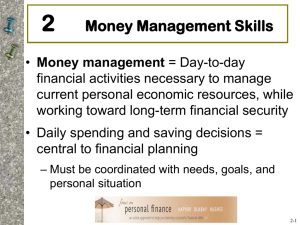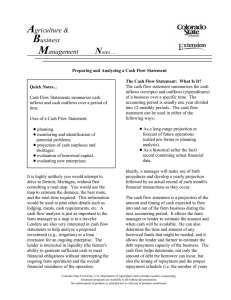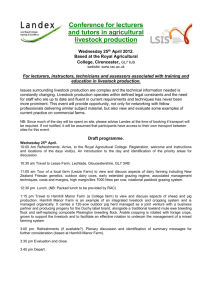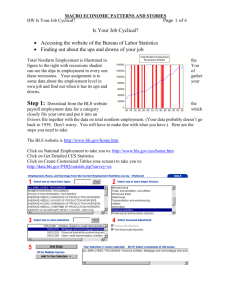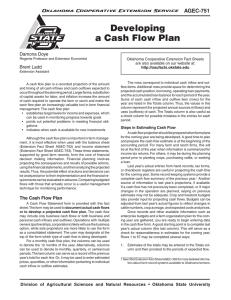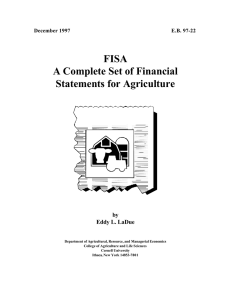Cash Flow Budgets
advertisement
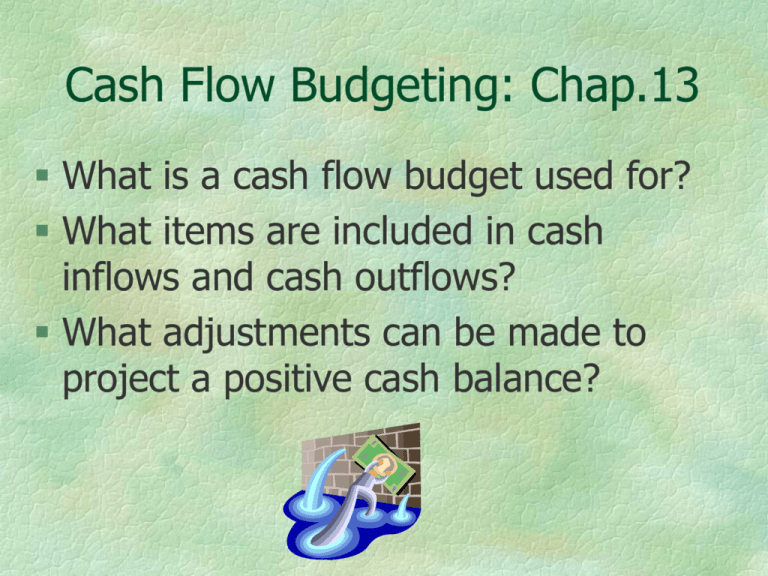
Cash Flow Budgeting: Chap.13 What is a cash flow budget used for? What items are included in cash inflows and cash outflows? What adjustments can be made to project a positive cash balance? Cash Inflows Sales and other cash income New loans received Sales of capital assets Nonfarm income Beginning cash on hand Cash Outflows Cash expenses Principal payments Purchase of capital assets Nonfarm expenses Ending cash on hand Do not include: Depreciation Opportunity costs Any other noncash income or expense Cash Flow Budgets Can Be: Annual Quarterly Bi-monthly Monthly 1. Estimate cash inflows and outflows for the entire year first. 2. Distribute the annual totals among the periods within the year. Budget within the year JanFeb Cash Inflows - Cash Outflows = Balance MarApr MayJune JulyAug SepOct NovDec Objective: Budget for a positive cash balance at the end of each period May plan for a minimum balance, such as $1,000 Balance the budget for the whole year first, then for each period within the year. Annual Adjustments to Cash Flow Sell more crops and livestock at end (but less will be available next year) Use loan funds to purchase capital assets Postpone purchase of capital assets Sell capital assets Annual Adjustments to Cash Flow Postpone repayment of short-term loans (but more will be due next year) Lengthen the repayment period for term loans Reduce nonfarm expenditures Increase nonfarm income Seasonal Adjustments Shift timing of crop and livestock sales Shift timing of cash expenses (including loan payment dates) Use short-term credit Comparison of Whole Farm Budget and Cash Flow Budget Whole Farm Gross Revenue Sales of grain, livestock, products Other income (USDA payments, etc.) Cash Flow Cash Inflows Sales of grain, livestock, products Other income (USDA payments, etc.) New loans received Sales of capital assets Nonfarm income Cash on hand Profit and Cash Flow In the short run we want to have enough cash to meet all obligations on time. In the long run we want to earn enough to pay all costs including a return to our own labor and investment. Comparison of Whole Farm Budget and Cash Flow Budget Whole Farm Costs Cash variable costs Cash fixed costs Depreciation = Net Farm Income Opportunity costs = Profit & Ret. to Mgt. Cash Flow Cash Outflows Cash variable costs Cash fixed costs Loan repayments Capital asset purchases Nonfarm expenses = Net cash flow Uses for a Cash Flow Budget 1. Project credit requirements and repayment plan 2. Plan marketing patterns 3. Communicate these plans to a lender 4. Useful for monitoring actual cash flows throughout the year Cash flow budgets do not project profits or net farm income.
